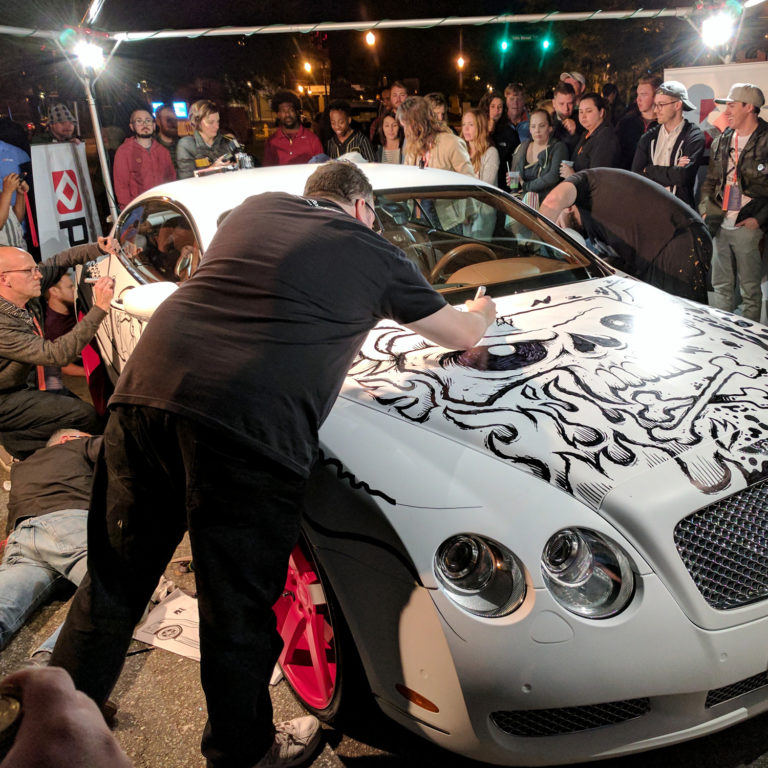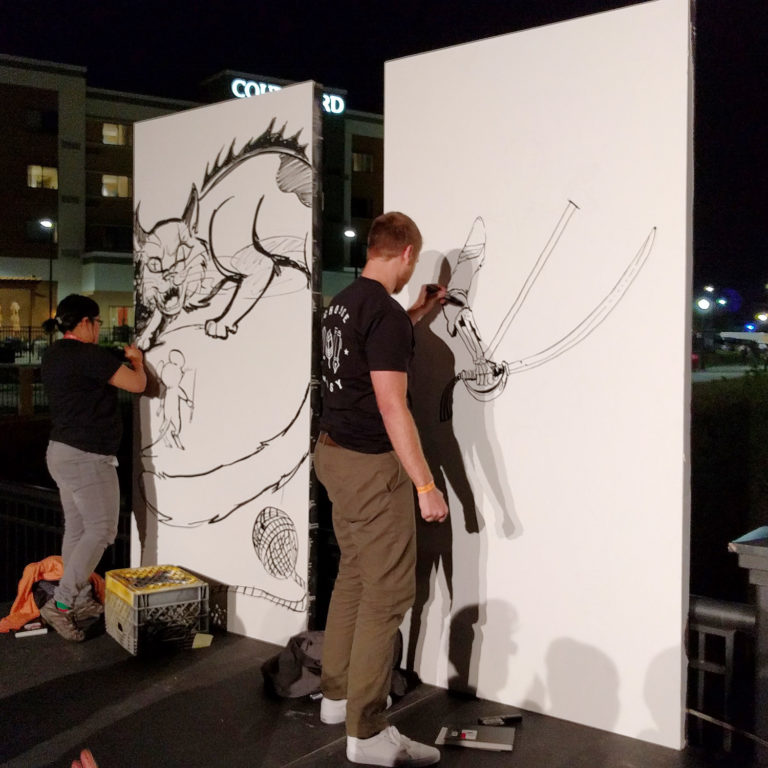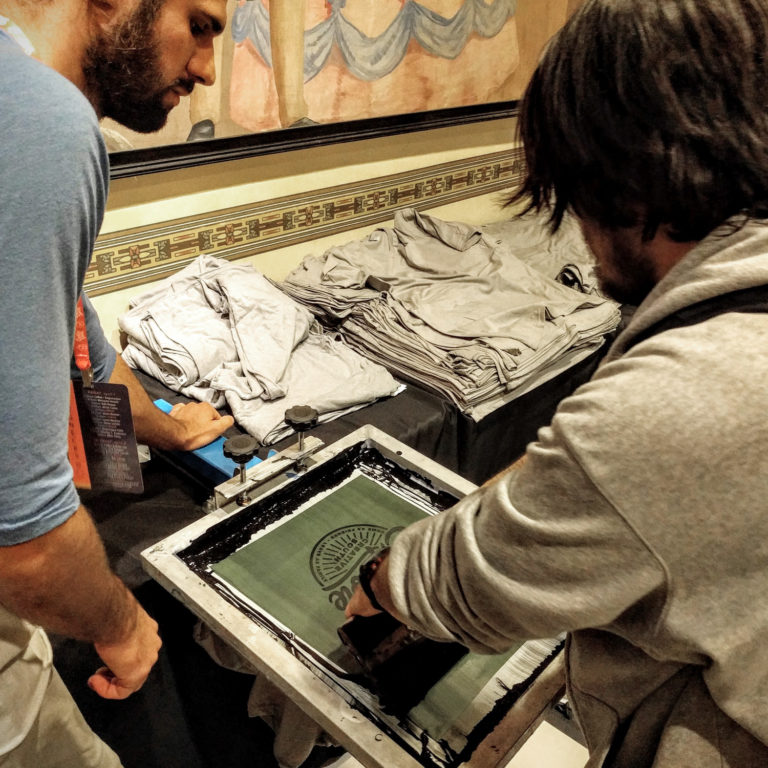Commentary / Jon Edwards
Taproot Finally Attends Creative South
You’d think that making the two-and-a-half-hour trip to a noteworthy design conference would be a no-brainer.
But it wasn’t. Our team waited until the sixth year of Creative South to attend.
We had been aware of the conference for a while, but something always seemed to get in the way, preventing us from making the short trip to Columbus, Georgia. We had plenty of good reasons for putting it off, from being too busy at work to needing to stay home with our respective families. Now, having finally been there, we’re going to make a point of going back again. And again. And again.

Expectations
I had low expectations at the start. Hearing someone speak about a topic for about an hour at a time usually leaves me wanting. Even when a speaker is talented and presents well, there’s only so much you can say in a short period of time. You might walk out of the auditorium with a buzz, feeling as though you accomplished something by osmosis, only later to realize that all you got were catchphrases and fluff. It’s what I call corporate self-help. Lots of clever-sounding stuff packaged in a way to make it appear meaningful, but that doesn’t actually benefit you in any definable way. Things like:
“You must fail in order to succeed.”
“Don’t let your ‘self’ determine your ‘worth’ or your ‘worth’ define your ‘when.’”
Okay, but what does any of that stuff actually mean? I’m eager to discover new ways of thinking, to gain perspective and challenge myself, but seldom is that born out of a contrived PowerPoint presentation with silly affirmations that might sound compelling while being completely void of meaning.

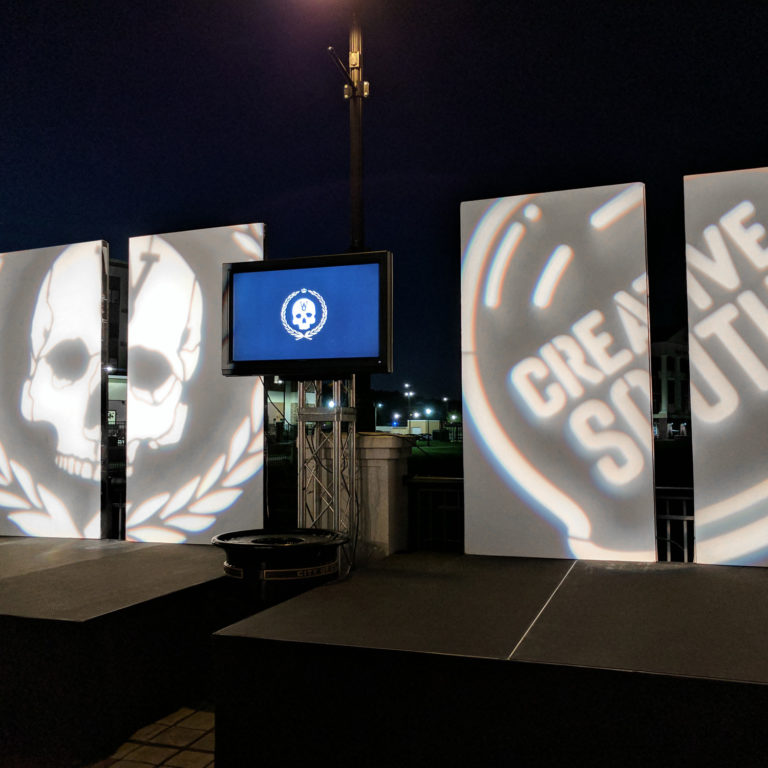
Our team came away newly motivated, ready to create and design.
There was some filler at Creative South, admittedly, but far less than I would have thought. Our team came away newly motivated, ready to create and design. That alone made the trip worthwhile.
By the time we were in the car headed home at the end of the weekend, we were rethinking the way we present logos, pitch new business and format our proposals. We were talking about how to improve our processes and change our practices for the better in clearly defined ways.
What made this conference and the speakers different from — and better than — others?
Bob Ewing is a talented hand lettering artist. He’s well-known for his craft and has produced a lot of phenomenal work. Rather than spend all his time on stage congratulating himself for everything he’s done well, he showed us where he started. That included embarrassingly humble beginnings as a type designer, with inelegant stumbling that progressed slowly in a very public way: he shared all of his work, as he created it, on Instagram. As good as he is now, he didn’t wake up one morning with the ability to create type without effort. He worked at it for years to build and refine the skill.
Yes, that’s inspirational, but in a very applicative way. He showed his laborious process, giving us insight into not only how he creates, but also how he became a capable creator.
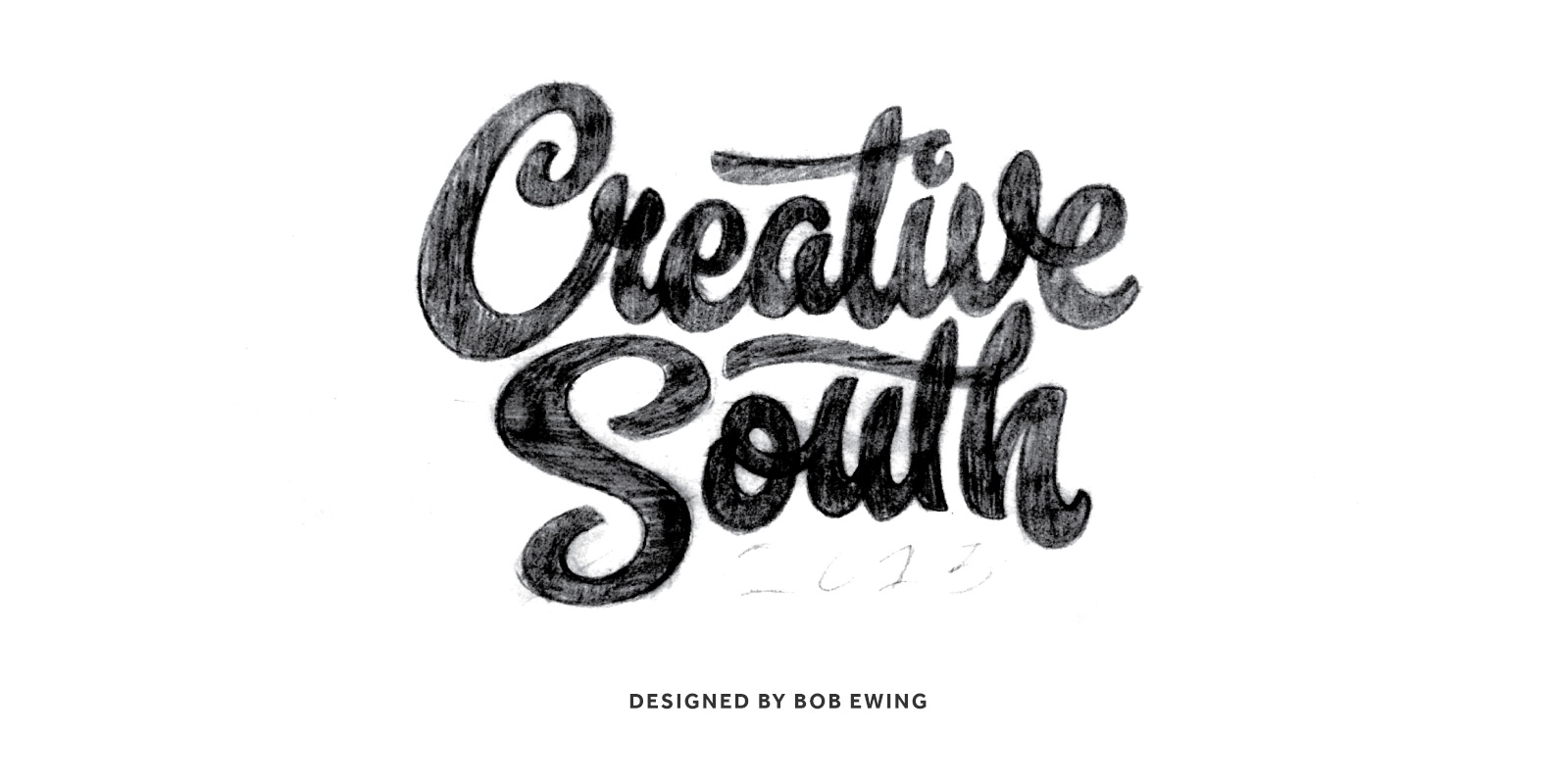
Jason Blumer, another speaker, is not a designer. He’s not even a “creative.” He’s an accountant. It goes without saying that his speech didn’t inspire the audience with examples of his work since he didn’t have any visual work to show. He instead talked about better ways to build proposals, how to effectively price projects and how an agency can better value its work to help it become more financially successful.
Jason’s speech was starved of catchphrases; completely bereft of them. He got right to the meat of his talk. He gave the designers in the audience tools to help them do their job better. I’ll take that over a catchphrase any day.
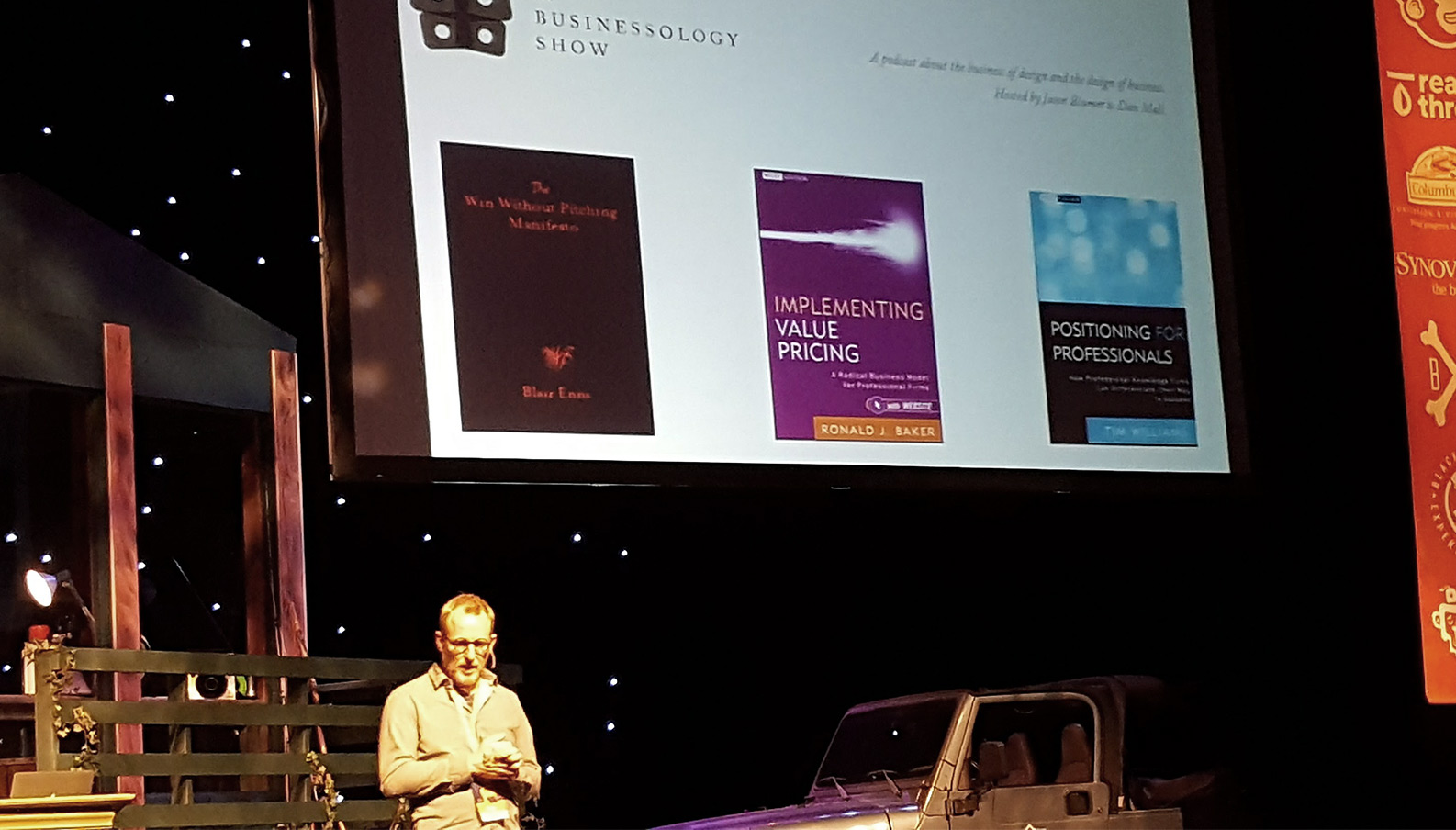
Then there was Dominique Falla, whose speech was more on the inspirational side. She has had, and continues to have, a number of impressive careers, including author, designer, photographer and academic professor. She also curates the work of other typographers through her Typism books, Typism events and a pretty massive cult-like Typism following. She is driven by design, to the point where she laments any of her students lapsing in their creative endeavors. This, she said, she hates more than anything; seeing a talented person walk away from their talent.
But what most impressed me was her ability to offer something more than just inspiration: she imbued the audience with creativity by proxy. Her desire to create, and to see others create well, was remarkable.
Until Next Year
After having my skepticism rightly brought down a notch, I was able to enjoy other parts of the conference, like live illustration wars (which involved artists attacking a white Bentley with markers). As a team of designers, we were in our element, surrounded by others from varying backgrounds who shared our interests. This peripheral stuff didn’t give us any specific tools, but it did reinvigorated us. It was a injection of jet fuel that we sometimes don’t realize we need until after we’ve had it. When you combine that with the surprisingly informative and genuinely helpful talks, it’s a no-brainer to go back again next year.
